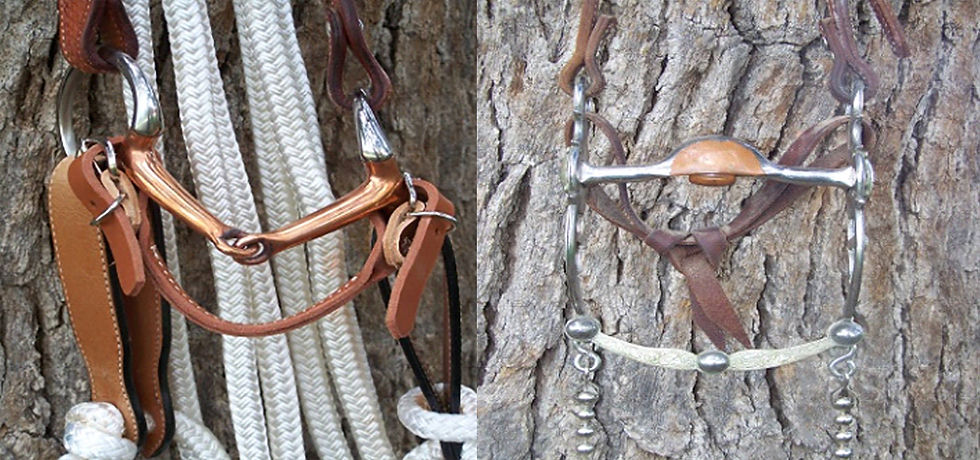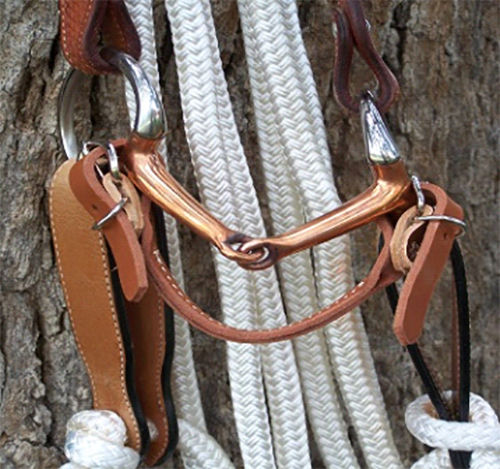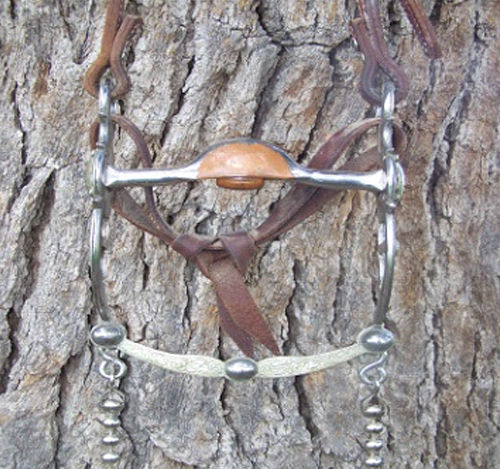A BIT ABOUT BITS AND THE TRUTH BEHIND THEM
- Susan Warnock
- Nov 30, 2020
- 3 min read
Updated: Dec 11, 2021
by Susan Warnock | Feb 5, 2016 | Education

Bits, Bits and More Bits.
If you have ever found yourself in the bit aisle of a tack store feeling completely overwhelmed you are most definitely not alone. The bit covered walls are towering. There are so many choices- bits of every shape and size it seems, silver plaited bits, copper-mouth bits, bits for stopping, turning, corrections bits, high ported bits - the list goes on. You ask yourself, with a feeling of settling doubt, which is the best one for you and your horse? By breaking the subject of bits down into two main categories the business of bits suddenly doesn’t seem nearly so daunting. See website to learn more.
The Snaffle Bit vs the Curb Bit.
Any bit with a broken mouthpiece is often referred to as a snaffle bit while bits with shanks are considered curbs.
THE SNAFFLE BIT

Any true snaffle bit will have a broken mouthpiece without shanks such as an o-ring snaffle bit, a d-ring snaffle bit, full cheek snaffle bit or egg butt snaffle bit. Broken mouth pieced snaffles with shanks such as a tom thumb snaffle bit are not true snaffle bits. A true snaffle bit will work directly off the outside corners of the horse’s mouth. He will feel the direct amount of pressure from the riders hands in this way. What this means is that if the rider applies 1 pound of pressure to the reins/bit, the horse in turn feels 1 pound of pressure. This makes the snaffle bit a mild bit suitable for starting young horses and rehabbing problem horses. Because of the bit’s mildness, it is an attractive bit to use for young and/or inexperienced riders and certainly satisfactory to use by any level rider on any horse at any time in his life and in some cases throughout. Personally I prefer an egg butt snaffle bit or d-ring snaffle bit, as these bits are designed to keep from pinching the horse’s mouth the way an o-ring snaffle might. I also prefer a copper mouthpiece which encourages the horse’s mouth to salivate, so the mouth remains moist and comfortable around the bit.
THE CURB BIT

A curb bit is a shank bit (regardless of the mouthpiece, broken, ported or other). The presence of shanks makes it a curb. Because of the leverage action of a curb bit, the signal from the rider’s hands to the horse’s mouth is compounded. If the rider applies 1 pound of pressure to the reins/bit, the horse will feel 2 pounds of pressure. The longer a bit’s shanks the more this ratio intensifies. Curb bits are designed to be used along with curb straps which create another form of pressure. A horse in a curb bit will be feeling pressure from the bit’s mouthpiece, curb/chin strap, and poll pressure from the headstall. This can make a horse unprepared to carry and work off a curb bit feel claustrophobic. The horse may then begin to shake its head or exhibit other undesirable and/or dangerous behaviors in an effort to find relief. The curb bit is a signal bit, not a control device, and should only be used by horses who are advanced enough in their training, and by riders who understand its use, as curb bits can quickly become harsh in the wrong hands. If the horse and/or rider is green or the horse is working through behavioral issues, it should not be ridden in a curb bit, but in a snaffle. Think of the snaffle bit as an elementary school bit, and a curb bit as at least a middle to high school bit. There are many types of curb bits, constructed in different ways, and you will become more familiar with them the farther you go along in your horsemanship/riding journey.
A Bit of Knowledge Do keep in mind that any bit is only as good as the hands behind it. Even the mildest bits can become torture devices in the wrong hands, just as in the right hands, you’ll be able to ride your horse with anything, if not nothing at all. Bits don’t control horses just as ropes don’t. Although these are regular pieces of equipment usually thought of to ‘control horses’ the truth remains- if these half plus ton animals did not allow us to control them, nothing we tried strapping on them would suffice. A bit of knowledge is the best type of bit to use. Learning to work with the horse’s mind is much more effective than only considering what type of equipment we will use on them and certainly much more interesting and of course- rewarding.
© The Horse Match Maker






Comments